The 1930s was a period of intense creativity, during which many famous inventions were developed. Inventions in the 1930s are still important today. Many of the products we use every day were created in this decade.
Although the Great Depression of the 1930s inhibited people from investing in development, there were still innovations in many areas such as medicine, science, transportation, and communication. The decade was also a period of intense creativity in literature and film.
The following 20 inventions from the ’30s were most important in shaping today’s world, and their inventors’ names are recognized worldwide.
Also, read the inventions from 1800 and famous inventions from the 1950s.
Here’s a List of 20 Inventions in the 1930s
The 1930s was the decade of innovation, which saw the rise of new technologies and inventions.
The Great Depression had a lot to do with this because people were looking for new ways to make money or simply survive.
Thousands of inventions changed the world. Some of them were useful, and some of them were just fun. However, all inventions of the 1930s changed the way we live.
1. Invention: Differential Analyzer
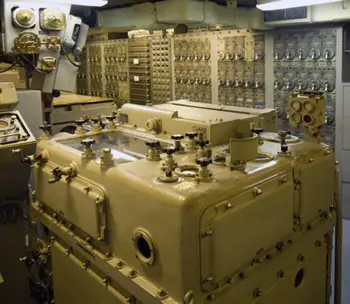
Date of Invention: 1930
Inventor: Vannevar Bush
The Differential Analyzer was a mechanical analog computer designed to solve differential equations numerically.
Utilizing a control device that moved a sequence of rods representing the function’s coefficients and differentiated it with respect to time.
During World War II, a group led by Vannevar Bush and funded by the Rockefeller Foundation designed what was then considered to be the most sophisticated differential analyzer.
It was known as the RDA2 (Rockefeller Differential Analyzer Number 2).
The biggest drawback to the fully mechanical versions was that reprogramming the problem to be solved required dismantling and rebuilding all of its internal mechanisms.
The process was long and tedious, requiring many hours of work with wrenches and other tools.
The RDA2 was able to overcome these problems by replacing the torque amplifiers with sensors that would detect the rotations of the integrating shaft from the knife-edge wheel and pass those values along to other parts.
Later, in the 1950s this device was replaced by a digital computer.
2. Invention: Scotch Tape
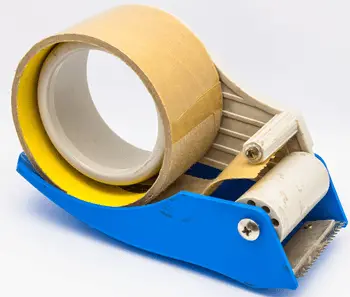
Date of Invention: 1930
Inventor: Richard Drew
Scotch tape is a type of pressure-sensitive tape that was invented in 1930 by Richard Drew.
It is one of the most popular tapes in existence today, and it’s used for everything from home repairs to art projects.
Scotch tape was originally created as a way to hold together pieces of paper until they could be stapled or glued together.
The tape is made using a latex adhesive that becomes stronger when it’s exposed to moisture, which means that it can hold on to anything from paper to cardboard without falling off or leaving residue behind (except when it’s removed).
The first version of Scotch tape was called Cellulose Tape.
But, they changed the name after someone commented that it sounded like “cellophane” and they didn’t want people thinking they were selling plastic.
3. Invention: Jet Engine
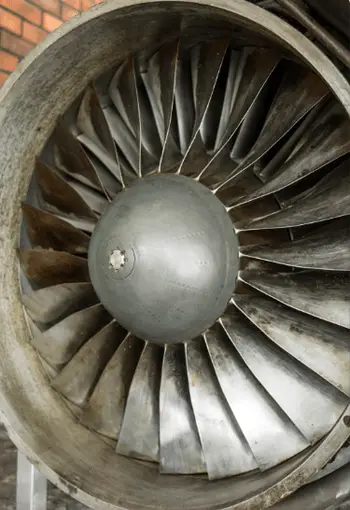
Date of Invention: 1930
Inventors: Hans von Ohain and Sir Frank Whittle (co-inventors)
The jet engine was invented in 1930 by Hans von Ohain and Sir Frank Whittle.
The two men were working independently of each other at the time, but both had the same idea and were able to produce functioning prototypes that worked.
A jet engine is an internal combustion engine that uses a powerful stream of compressed air to drive it.
The air is first compressed, then mixed with fuel and ignited to create a high-pressure, high-temperature stream of exhaust gasses.
These gasses then drive a turbine which spins a shaft that turns an airplane’s propeller.
The first successful flight with a jet engine was made by Germany’s Heinkel He 178 in August 1939.
4. Invention: Sliced Bread

Date of Invention: 1928
Inventor: Otto Frederick Rohwedder
The invention of sliced bread was a monumental moment in the history of American food, and it was invented in 1928 by Otto Frederick Rohwedder.
Rohwedder, an Iowa-based inventor, created the machine that could slice loaves of bread into uniform pieces that would stay fresh longer than unsliced loaves.
He received a patent for this invention on January 7, 1930.
It was first sold commercially on July 7, 1930, after being manufactured by the Chillicothe Baking Company under license from Rohwedder himself (who later went on to create other inventions like an automatic potato peeler).
He first tried to sell his invention to bakeries, but they were not interested because they feared the sliced loaves would go stale too quickly.
However, a St. Louis entrepreneur named Otto Kolschowsky bought one of Rohwedder’s machines in 1928 and began selling pre-sliced Wonder Bread at his grocery store.
5. Invention: First Car Radio
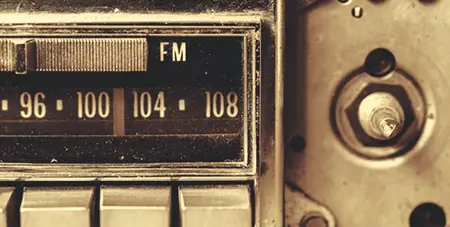
Date of Invention: 1930
Inventor: Joseph and Paul Galvin (brothers)
The first car radio was invented in 1930 by brothers Joseph and Paul Galvin.
The pair had been working on their design for months before they finally got it to work.
The device, which played music from a phonograph player, was installed in a 1929 Ford Model A and presented at the Chicago Automobile Show.
The radio could be connected to a speaker system inside the car or outside the car.
It had a control dial on the front of the unit so that it could be easily turned on and off while driving.
The first car radios were actually pretty simple: they were just a receiver that allowed you to listen to music while driving your car, with no FM or AM capability.
They were also very large and expensive—they cost around $100 (around $1,500 today).
6. Invention: Frozen foods

Date of Invention: 1931
Inventor: Clarence Birdseye
Frozen foods were invented in 1931 by Clarence Birdseye. He was an engineer, businessman, and inventor from Canada.
He had been working on methods to preserve food for years and came up with the idea of flash-freezing food when he saw how quickly fish froze in winter.
Birdseye developed the process of freezing food, which allowed people to buy food that didn’t spoil as quickly as fresh food did.
This changed how people ate and preserved their food, which led to a healthier life for everyone.
He then took his idea to a local meat company and got them to try it out, and they liked it so much that they started selling frozen food all over North America.
His idea has changed the way we eat forever because now we can buy frozen vegetables and fruit, as well as meat and fish that are already cooked!
7. Invention: Electron Microscope
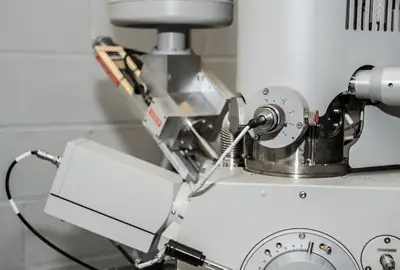
Date of Invention: 1931
Inventor: Max Knott and Ernst Ruska
The electron microscope was invented by Max Knoll and Ernst Ruska in 1931.
The device uses electrons to magnify objects and has since become one of the most important tools in science, diagnostics, and industry.
The idea for an electron microscope was conceived in 1925 by German physicist Ernst Ruska.
He suggested that electrons could be used to magnify objects much like light is used to magnify images with a conventional microscope.
He built his first prototype in 1933 and demonstrated it at the 1936 International Electrotechnical Exhibition in Paris.
In 1931, Max Knott determined that an electron microscope could be built using a cathode-ray tube.
The same technology was used to create television screens—to project an image onto a fluorescent screen that would then be captured by a camera.
He also developed an electron lens system that allowed the scope to focus on objects as small as 1/100th of a millimeter (0.0039 inches).
8. Invention: Electric Razor
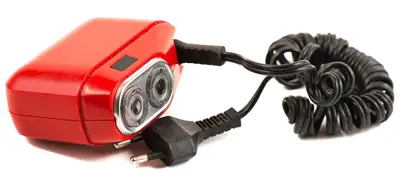
Date of Invention: 1931
Inventor: Jacob Schick
The electric razor was invented in 1931 by Jacob Schick.
He was a Russian immigrant who first came up with the idea while working at a barber shop in New York City.
Schick’s first electric shaver was powered by a hand-cranked generator, but he soon moved on to batteries.
His design included two rotating blades that shaved the hair off of the face, and it was marketed as a “hygienic” alternative to razors.
It took Schick 7 years to perfect this invention, which featured a motorized blade and could be used with an electrical cord attached to a wall outlet.
This allowed users to shave longer hair without having to go over their skin multiple times, which made it much safer than previous models had been.
9. Invention: Parking Meter
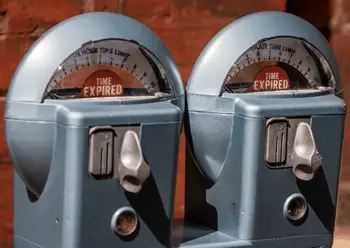
Date of Invention: 1932
Inventor: Carl C. Magee
The Parking Meter was invented in 1932 by Carl C. Magee, who was attempting to create a reliable machine for measuring time.
The first parking meters were designed to be used on street corners and operated with coins.
They were round and had an outer casing that protected the inner mechanism.
The inner mechanism allowed users to insert their money and then select the amount of time they wanted to park.
The meter allowed drivers to pay for parking at different rates depending on how long they parked their car.
This helped ensure that there would be enough spots for everyone who needed one since drivers could only park in spaces that were available at that time.
The first parking meters were installed in 1935 in Oklahoma City, and they have become a common fixture on most streets throughout North America ever since!
10. Invention: Radio Telescope
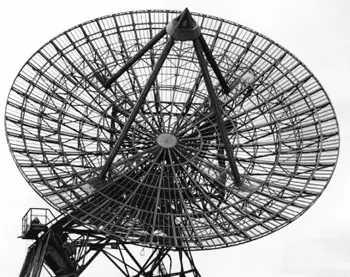
Date of Invention: 1933
Inventor: Karl Jansky
In 1933, Karl Jansky discovered the first radio telescope.
This invention allowed scientists to detect extraterrestrial life and further their understanding of the universe.
The telescope was made of a long wire that had an antenna at one end.
The length of the wire was 600 meters (1,968 feet), which is the wavelength that scientists were interested in studying.
The antenna was pointed at the center of our Milky Way Galaxy and rotated slowly for several months so that it could be studied from different angles.
The results of this study were published in 1936 by Karl Jansky in his article “Electrical Disturbances Apparently of Extraterrestrial Origin.”
This discovery opened up a whole new field of science called radio astronomy and marked an important step toward understanding how much we have yet to learn about our universe.
11. Invention: FM Radio
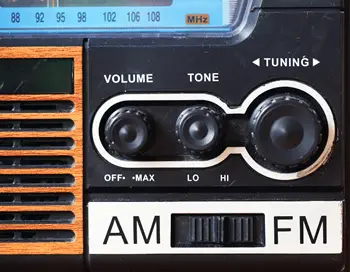
Date of Invention: 1933
Inventor: Edwin Howard Armstrong
FM Radio was invented in 1933 by Edwin Howard Armstrong. This invention revolutionized the radio industry by allowing listeners to listen to music.
FM stands for “frequency modulation.” Frequency modulation is a method of transmitting audio signals over the airwaves that allows for more than one station on a single frequency.
In other words, you can have more than one station broadcasting over the same frequency without interference from each other because each station has its own unique frequency.
FM Radio was able to play music at a higher quality than AM radio and could be listened to on mobile devices.
The new technology meant that stations could broadcast more than one program at a time, and listeners could adjust the volume to their liking.
12. Invention: Trampoline
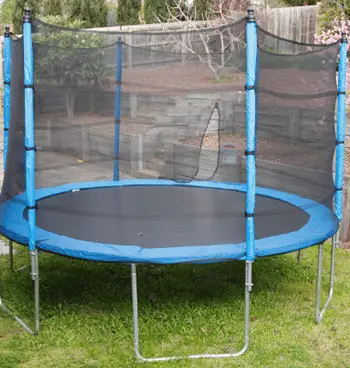
Date of Invention: 1934
Inventors: George Nissen and Larry Griswold
The trampoline was invented in 1934 by George Nissen and Larry Griswold.
Both men were students at the University of Iowa, where they developed the first prototype for a trampoline.
They were inspired by a Russian inventor who had invented something similar, but their design was much safer because it used springs instead of an elastic rope.
The first trampoline consisted of a bed sheet with some rope attached to it.
The two men would jump on top of this bed sheet, which would then bounce them back up into the air.
Initially, Nissen and Griswold did not intend to sell their invention or make money off of it.
They simply wanted to create something fun that they could do together at the university.
However, after seeing how much other people enjoyed their creations, they decided to start selling them commercially.
13. Invention: First Magnetic Recording
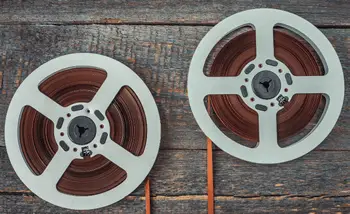
Date of Invention: 1934
Inventor: Joseph Begun
The invention of the first magnetic recording was a huge step in the evolution of modern-day technology.
In 1934, Joseph Begun invented the first magnetic recording while working at Ampex Corporation.
He had been tasked with creating a way to record sound on tape, and he did so by using a thin wire wrapped around a plastic ribbon.
This recording device was called the “Wire Recorder.”
The wire recorder was revolutionary because it could store sound for hours at a time, whereas other recording devices only recorded for minutes.
The wire recorder also marked a turning point in the history of sound storage because it allowed people to record audio without having to directly touch or manipulate any parts of the recording device itself.
With this invention came an opportunity for many different types of businesses and individuals.
Musicians could now record music without hiring an orchestra; journalists could now record interviews, and teachers could now record lectures.
14. Invention: Nylon
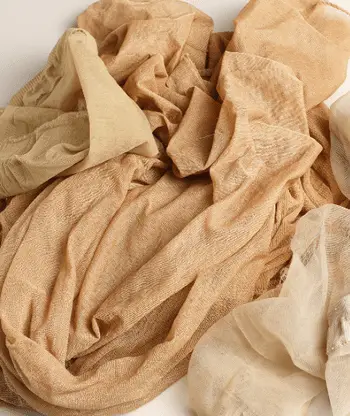
Date of Invention: 1934
Inventor: Wallace Carothers
One of the many inventions in the 1930s was Nylon. It was invented in 1934 by Wallace Carothers.
Originally was known as”polyamide” and was first produced by DuPont Corporation.
Nylon is a synthetic polymer, meaning it’s made from chemicals rather than plants or animals.
It has many uses, including making stockings and toothbrushes.
The name “nylon” came about because Carothers liked the sound of the word for some reason.
He also thought that it would be easy to remember and wouldn’t have any other product names associated with it like “polyamide” would have had.
Carothers worked as a chemist at DuPont and was trying to make new types of plastics that could be used for things like tires, stockings, etc.
But he had trouble finding a way to make them strong enough without being too expensive or difficult to manufacture.
15. Invention: Radar

Date of Invention: 1935
Inventor: Robert Watson-Watt
Radar was invented in 1935 by Robert Watson-Watt, a British physicist.
Watson-Watt was working for the British Air Ministry on a means to detect aircraft in flight.
Watson-Watt and his team had been working on this problem since 1933 when they began experimenting with radio waves.
Radar is an acronym for “radio detection and ranging.” It is used to detect objects at long distances, using radio waves.
The acronym comes from the fact that radar stands for RAdio Detection And Ranging (RADAR).
They used a transmitter to send out radio waves that would bounce off an airplane flying overhead.
The reflected waves would then return to the receiver.
By measuring the time it took for the reflected waves to arrive back at the receiver, they could calculate their distance from them.
In 1935, Watson-Watt’s team demonstrated their invention at Orford Ness in Suffolk, England. Radar was first used in World War II by both sides of the conflict.
16. Invention: Photocopier

Date of Invention: 1937
Inventor: Chester F. Carlson
In 1937, Chester F. Carlson invented the photocopier.
It was a huge breakthrough in the field of printing technology, and it changed the way we share information and make copies of documents.
Carlson’s idea for the photocopier came from an experiment he conducted in 1931.
He was working on a research project that involved using electrophotography to replicate documents by placing them between two electrically charged plates and exposing them to light.
When Carlson tried to patent his idea, he ran into problems because there were already patents on other technologies that involved using light to make copies of documents.
Things like microfilm or xerography were very similar but uses heat instead of light.
However, he eventually won his case in court because no one had previously used light as a way to replicate documents at such high resolution—and thus created an entirely new form of copying technology that became known as “photocopying.”
17. Invention: Ballpoint Pen
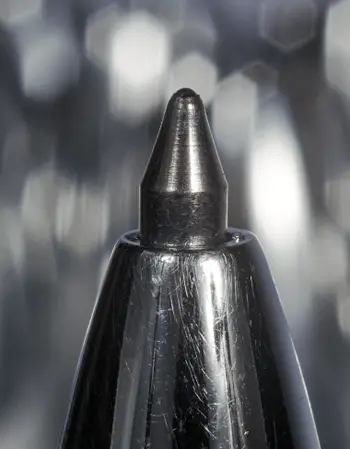
Date of Invention: 1938
Inventor: Ladislo Biro and László Bíró
The ballpoint pen, invented by Ladislo Biro and László Bíró in 1938, has become an everyday tool for millions of people around the world.
The pen is used for writing, drawing, and even making corrections on printed documents. It is one of the most popular writing instruments available today.
The ballpoint pen consists of a reservoir that holds ink and a hollow tube with a tip at one end which holds a small ball bearing.
When the pen is pressed against paper, the ball bearing rolls along the surface of the page leaving ink behind as it moves along.
The ink flows past the ball bearing onto paper when pressure is applied to push it out of its reservoir through tiny holes in its tip.
18. Invention: Xerography
Date of Invention: 1938
Inventor: Chester Carlson
The invention of Xerography was a huge leap forward in the printing industry. Chester Carlson, an American physicist, invented the process in 1938.
Xerography was invented because previous methods of duplicating documents were too slow and expensive.
Before this technology became available, businesses had to send documents offsite to be printed on large presses that could handle large batches of paper at once.
This required a lot of time and money, especially if there were multiple copies of the same document being made.
It would take days to make a copy of a document using carbon paper and ink, but with xerography, you could make multiple copies in just seconds!
Xerography’s invention prompted the creation of many other technologies we use today—from fax machines to photocopiers.
19. Invention: Teflon (Tetrafluoroethylene Polymers)
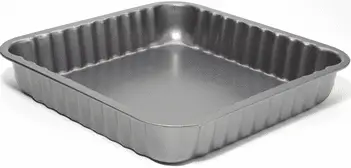
Date of Invention: 1938
Inventor: Roy J. Plunkett
The story of Teflon is one of both scientific breakthroughs and everyday usefulness.
In 1938, Roy J. Plunkett was working for the Dupont Company in New Jersey.
He accidentally discovered that a gas he was working with—fluorine—had polymerized into a new substance that would go on to become known as Teflon.
He was interested in discovering why this happened and found out that it was because of the high heat and pressure that he had been working under while trying to create a gas for use as an inhalation anesthetic.
Plunkett had no idea what this new substance would be used for, but he knew it had potential because it repelled water, oil, and other substances without wearing out or losing its effectiveness over time.
20. Invention: First Successful Helicopter

Date of Invention: 1939
Inventor: Igor Sikorsky
The invention of the first successful helicopter was one of the most important technological developments in aviation history.
It allowed people to fly over land and water, and it opened up new possibilities for exploration, transportation, and military use.
The first successful helicopter was invented by Russian-born American engineer Igor Sikorsky in 1939.
He had been working on helicopters for years before his breakthrough design, which featured two counter-rotating rotors that provided lift and thrust.
This design is still used today in all modern helicopters.
Sikorsky’s invention made a tremendous impact on warfare during World War II.
It allowed soldiers to fly over water or land without needing a runway or landing strip—they could even land on top of an enemy ship!
Famous Inventors From The 1930s
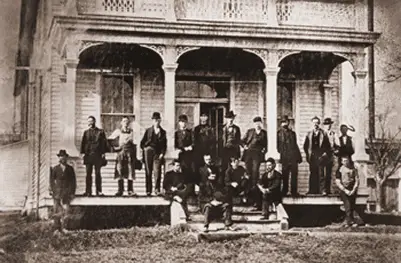
History is full of great inventors who have made the world a better place.
They’ve changed the waIt was a period of great industrialization. It was a time when the world was changing.
People were becoming more mobile, moving to cities and towns where they could find work that was better paid than farming.
But how did these people become so innovative?
Here are some of the most famous inventors of the 1930s. Check their short and interesting biographies to understand their development path.
1. Roy J. Plunkett (1910-1994)
Roy J. Plunkett was a chemist who was born in New Carlisle, Ohio. He graduated from Manchester College in 1932 with a B.A. in chemistry.
He earned his master’s degree in 1933 and a Ph.D. in 1936, both from Ohio State University.
After completing his studies, he began working for DuPont in 1935 as a research chemist and later became head of their fluorine research department in 1940.
He discovered tetrafluoroethylene resin / Teflon while researching refrigerants at DuPont, which has since become one of the most popular materials used to make non-stick pans today.
He remained in charge of the Chamber Works until 1952 when he moved to DuPont’s Freon Products Division.
Plunkett’s discovery of Teflon led to his managing efforts that developed numerous new fluorochemical products and processes.
These innovations have become widely used in the refrigeration, aerosol, electronic, plastics, and aerospace industries.
2. Chester F. Carlson (1906-1968)
Chester F. Carlson was an American physicist, inventor, and patent attorney born in Seattle, Washington. His most famous invention is the photocopier.
He is best known for his discovery of xerography and his subsequent development of the process into a practical form.
He was awarded patents related to his inventions in 1947 and 1948 while working at Kodak’s research laboratory in Rochester, New York.
The first patent application that he filed on September 14, 1938, became the foundation for all future work related to xerography.
Carlson’s work on xerography began as an attempt to improve microphotography for use in espionage during World War II by reducing its size five-fold.
It meant an optical document copier machine that used light pressure from a single lamp instead of heat from an electric bulb as had been done previously.
In 1946 Carlson founded Xerox Corporation (originally known as Haloid Company) with engineering aide Chester Pierce and another colleague at Kodak, David Coggins.
3. Robert Watson-Watt (1892-1973)
Robert Watson-Watt was a Scottish pioneer of radio direction finding and radar technology. He invented radar in 1935, and the first demonstration of its capabilities occurred two years later.
He was born in Brechin, Angus, Scotland in 1892. His family moved to Montrose when he was young and he attended school there until he was 14 years old.
He then went to Edinburgh University to study engineering. He graduated in 1914 with a BSc (Eng) degree with first-class honors in electrical engineering.
During World War I, Watson-Watt worked for the Admiralty as an engineer officer at the Royal Aircraft Establishment (RAE), Farnborough.
In 1919, he became assistant director of communications at the RAE where he worked on radio direction finding (RDF) technology and developed a number of devices including a compass locator.
That’s a system for locating submarines by receiving reflected radio waves.
These early radar systems were revolutionary in their ability to track airplanes from long distances by bouncing radio waves off them and detecting where they reflected back from—a technique called “radio direction finding.”
4. Wallace Carothers (1896-1937)
Wallace Carothers was an American chemist, inventor, and leader of organic chemistry at DuPont from 1929 to 1937.
He is credited with the invention of nylon.
Carothers was born in Iowa in 1896. He received his Ph.D. from Harvard University in 1921 and began working for DuPont in 1923.
His research focused on creating synthetic materials to replace natural fibers like silk and cotton, which were in short supply during World War II.
Carothers joined DuPont Company as head of its research department in 1923 and remained there until 1934 when he left to become a professor at Princeton University.
Carothers is best known for his invention of nylon, a synthetic fiber that could be used to make stockings or parachutes.
Nylon was first introduced in 1939 but wasn’t widely available until after World War II ended in 1945.
5. Joseph Begun (1905-1995)
Joseph Begun was a pioneer of magnetic recording. He invented the first magnetic recording tape and the first professional audio tape recorder.
Begun was born in 1900 in Russia. As a boy, he studied engineering at Moscow State University.
In 1921, he emigrated to the United States to escape persecution for being Jewish. He went on to study physics at the University of Minnesota and earned his Ph.D. in 1925.
He invented the first magnetic recording device, which was based on an idea by Fritz Pfleumer in 1932.
The technology was used to record sound and images on audio tape and video tape destined for broadcast.
He also invented an amplifier that used a thermionic valve, or vacuum tube, to amplify small signals.
In 1930, Begun joined the US National Bureau of Standards (NBS), where he worked until his retirement in 1972 as head of their Division of Magnetic Recording Research and Development.
6. Edwin Howard Armstrong (1890-1954)
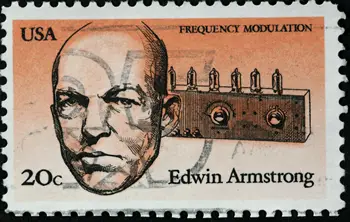
Edwin Howard Armstrong was an American electrical engineer and inventor.
He invented FM Radio in 1933, which allowed for better sound quality and less static than AM radio signals.
In the 1930s, Armstrong also developed a superheterodyne receiver for commercial applications.
Edwin Howard Armstrong was born in New York in 1890 to Henry L. and Gertrude (Gates) Armstrong.
His father was a prominent thoracic surgeon at Columbia University Medical Center who later became its president.
He went on to study at Union College where he majored in electrical engineering but dropped out before graduating because he did not want to be an officer in World War I.
He then went on to Columbia University where he finished his degree in 1918.
Armstrong was also a lawyer and professor at Columbia University, where he taught for 27 years.
His father was an attorney as well as a politician who served as mayor of Somerville, Massachusetts from 1910 to 1912
7. Jacob Schick (1877-1937)
Jacob Schick (1877-1937) was an American inventor and entrepreneur who patented an early electric razor.
Jacob Schick was born on December 12, 1877, in Springfield, Ohio. His family moved to Chicago when he was young.
After graduating from high school in 1895, he attended the University of Illinois at Urbana-Champaign, where he received a degree in electrical engineering in 1900.
After graduation, he worked as an engineer for Western Electric until 1903.
In 1908, Schick left Western Electric to start his own company, which manufactured telephones and later radios.
He also invented an improved carbon microphone and sold it to AT&T for use in their telephones.
In 1910 Schick sold his interest in his telephone company and started another one called the Schick Manufacturing Company.
They made automobiles as well as razor blades from metal instead of steel wire because they were stronger but still flexible enough for shaving purposes.
The metal blades were popular because they didn’t rust like steel ones did and could be resharpened many times before being discarded.
8. Ernst Ruska (1906-1988)
Ernst Ruska was an American inventor who invented the electron microscope. He was born in Germany on 19th December 1906.
Ernst Ruska received his Ph.D. degree from the Technical University of Munich in 1931.
During his studies, he worked as an assistant to Prof. Dr. Max Knoll at the Institute of Physics, where he also qualified as a lecturer in 1936.
Ernst Ruska began his own research in 1934 and discovered that electrons had a high refractive index and could be used for focusing purposes.
Two years later he developed a small electron beam for microscopy that could be used for investigating living cells and tissues, a process known as electron microscopy.
9. Clarence Birdseye (1886-1956)
Clarence Birdseye (1886-1956) was a Canadian businessman and inventor best known for developing a process for freezing foods.
He is also credited with popularizing the idea of flash freezing.
Birdseye was born in Brooklyn, New York, on December 9, 1886.
His father died when he was three years old, so he was raised by his mother and his grandparents.
In 1907 he graduated from Yale University with a bachelor’s degree in economics.
After graduation Birdseye worked as a fur trader in Labrador and Canada’s Northwest Territories before joining the U.S. Army Signal Corps during World War I.
After the war, he went into business with his brother selling fish to restaurants in New York City.
In 1923 he became an independent salesman selling frozen food products throughout North America under the name General Seafoods Company Incorporated.
10. Richard Drew (1899-1980)
Richard Drew was an American businessman who invented scotch tape.
Drew was born in 1899 and raised in Columbia, Missouri.
He served as a pilot in World War I, then returned to the United States and took a job with 3M.
In 1925, he became head of the company’s New Product Development Department, which developed new products for customers.
One of his most famous inventions came about by accident after he accidentally dropped a sandbag on some cellophane tape.
The sandbag tore the cellophane tape but did not damage it beyond repair.
Drew realized that this could be useful in other ways, so he began experimenting with different materials until he discovered Scotch Tape.
Scotch Tape was first sold in 1930 and quickly became popular among consumers because it was easy to use and could be used for many different purposes.
It also has many different uses today, including holding items together without damaging them or creating temporary fixes until permanent repairs can be made.
Final Thoughts
In general, after lots of innovations like radio, phonographs, movies, etc…
The 1930s was a quite fruitful period and lots of inventions were introduced to the public by different people.
The decade may have been full of uncertainty and some pretty major challenges, but it also brought with it many truly innovative inventions that have contributed to our modern society.
Presented inventions in the 1930s are just the tip of the iceberg.
There’s a lot untold about this topic, so if you have something to add or ask, feel free to leave a comment. I would like to hear from you.

